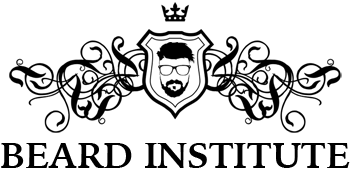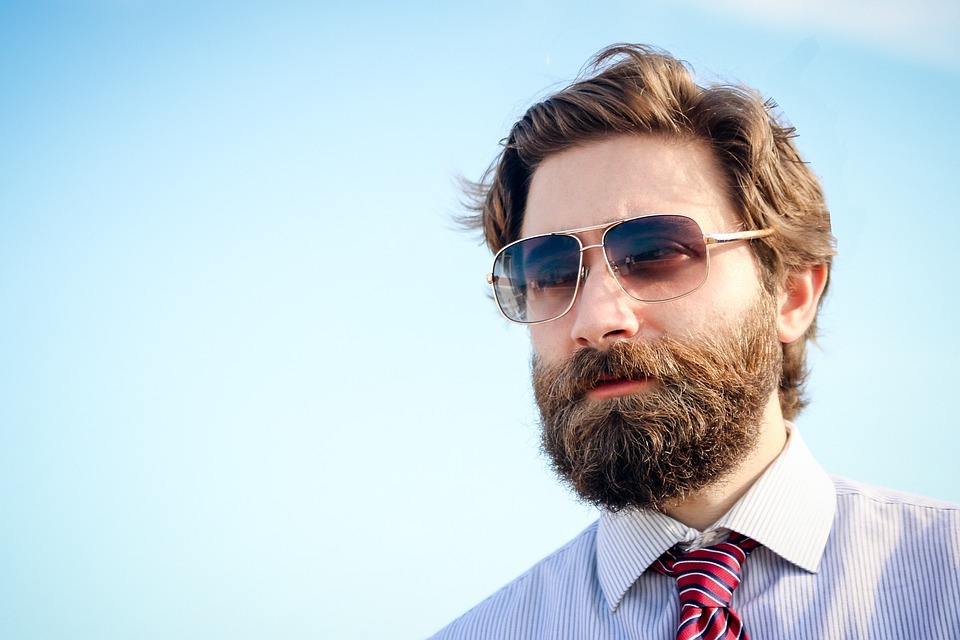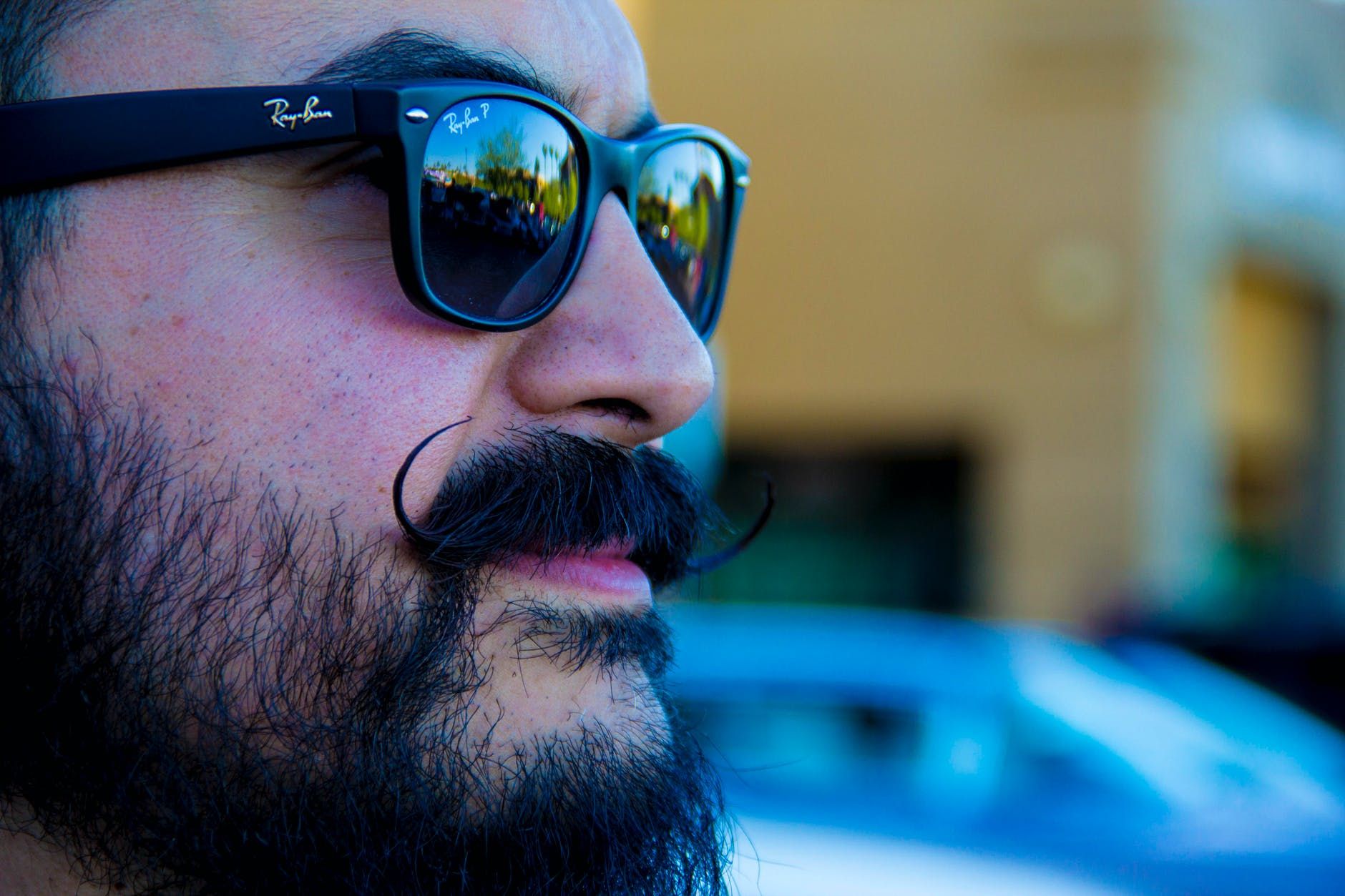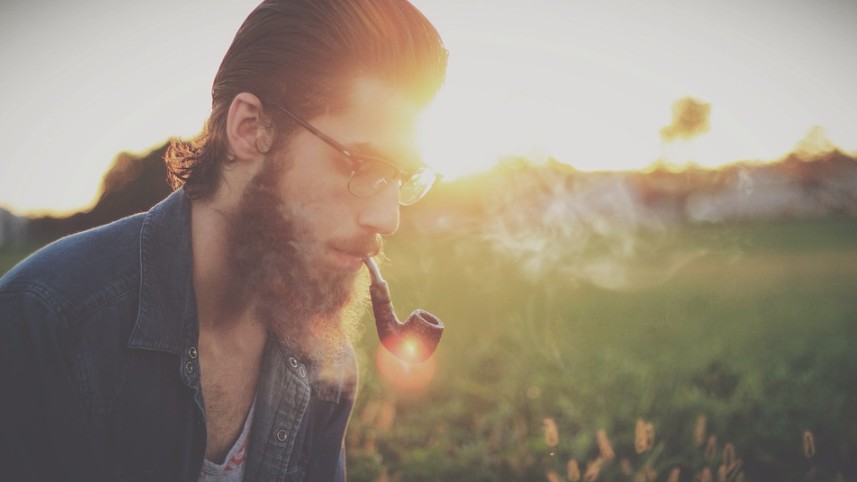At What Age Does a Beard Grow Fully?
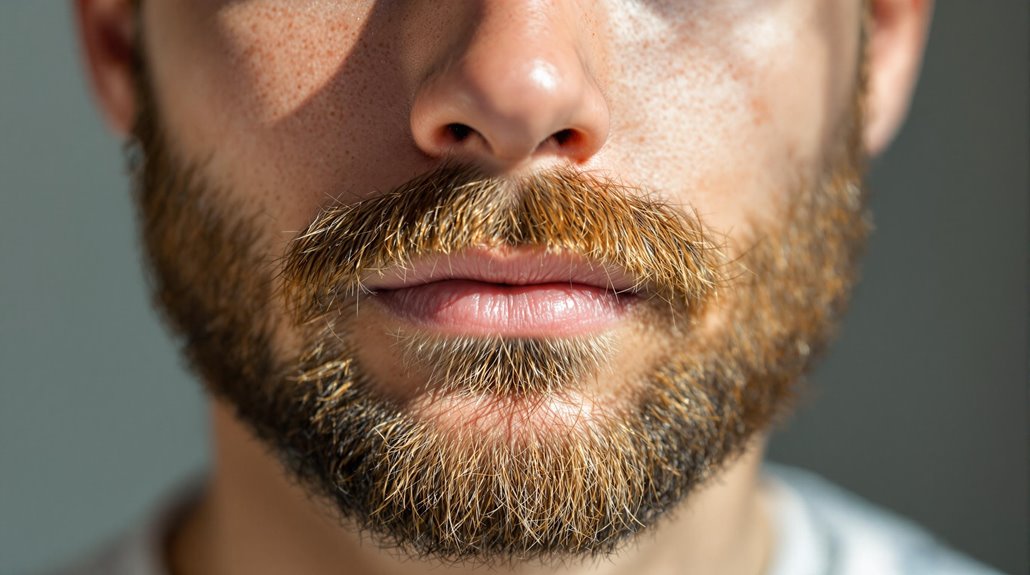
You'll likely see your beard reach full maturity between 25 and 30 years of maturity. Beard growth starts in your early teens, but it takes time to fully develop due to genetic and hormonal factors. Your family's genetic traits heavily influence how thick or full your beard will be. Hormones like testosterone play a vital role too. A well-rounded diet and healthy lifestyle support robust growth, but don't expect miracle changes overnight. Remember, myths like shaving to enhance growth are baseless. Want to understand better how maturity, genetics, and lifestyle intertwine with your beard expedition? There's much more to uncover.
Understanding Beard Growth Phases
Kicking off your expedition to a full beard requires understanding the distinct phases it undergoes. Beard growth typically kicks off between the stages of 18 and 30, with many men noticing the initial significant wave of facial hair growth during their late teens to early 20s. Initially, you'll experience stubble, lasting about 1-3 weeks. This is followed by an itchy phase around the 3-4 week mark as your hair becomes coarser. Don't worry, this is perfectly normal and indicates your progression toward a full beard is well underway.
By two months, you should notice considerable growth. Here is where density and styling options start to become more apparent. Hormones and genetics play strong roles in this phase, heavily influencing how your beard fills out. Patience is key, as achieving a mature beard can take time and varies widely among individuals.
After six months, the rate of growth generally slows. This is when maintenance becomes essential to preserve your beard's fullness and health. Regular grooming and care are necessary to keep it looking its best. Remember, each beard grows at its own pace, so accept your unique facial hair growth progression.
Role of Genetics in Beard Development
With regard to beard development, genetics is a major factor that determines how your facial hair will grow. The number and distribution of hair follicles you inherit can dictate the thickness and fullness of your beard. Family traits play a significant role, as you might notice your beard growth patterns resemble those of your parents. Genetic differences also affect how your body responds to testosterone levels, impacting how robustly your facial hair appears.
Consider this:
- Hair Follicles: Genetics determines how many you have and where they are, directly affecting beard thickness.
- Family Traits: If your father or grandfather had full beards, chances are you might too.
- Ethnic Groups: Your background can influence beard density; for example, Mediterranean men often have thicker facial hair compared to Far Eastern men.
- Maturity: Full beard development typically occurs between ages 18-30, though this varies widely due to genetic differences.
Understanding the role of genetics helps set realistic expectations for your beard growth progression. While some men might see full development early, others may need more time. Remember, your unique genetic makeup greatly influences how and when your beard fully grows.
Hormonal Influence on Beard Growth
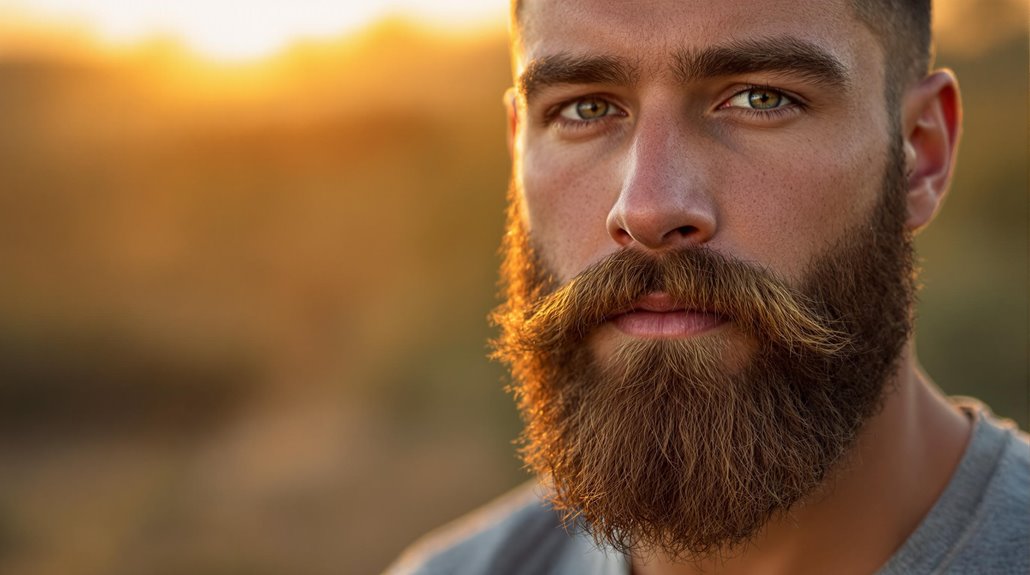
In regards to beard growth, hormones take center stage. Testosterone and dihydrotestosterone (DHT) are the key players responsible for transforming those fine vellus hairs into the coarser, more prominent terminal hair you've likely noticed sprouting during adolescence. This transformation usually starts between the periods of 13 and 16, as these hormonal changes kickstart the development of your facial hair. The hormonal influence is essential, but not everyone responds to these hormones in the same way.
Your genetic sensitivity to these hormones greatly impacts the thickness and fullness of a beard. Some people might enjoy a lush beard even with lower testosterone levels, while others, despite having high levels, may see a different growth pattern. This difference is all down to your unique genetic makeup and how your hair follicles react to testosterone and DHT.
As you mature, you might notice changes. Age-related decreases in testosterone levels can slow down beard growth, altering its texture, especially after the period of 40. But typically, full beard growth is achieved between 18 and 30. Understanding these factors can help set realistic expectations for your beard progression.
Impact of Age on Beard Maturity
As you've seen, hormones greatly impact beard growth, but maturity also plays a vital role in determining beard maturity. The process to achieving a full beard involves several stages influenced by years, hormonal changes, and genetic factors. Typically, full beard growth occurs between the years of 18 and 30. However, many men reach their peak beard density in their mid-20s to early 30s. Here's how years impact beard maturity:
- Early Development: During puberty, hormonal changes, especially increased testosterone levels, kickstart facial hair growth. The initial stubble stage lasts about 1-3 weeks.
- Transition to Maturity: By your late 20s or early 30s, you may notice a full beard taking shape as the density increases and patchiness decreases.
- Genetic Influence: Genetic factors play a significant role in determining when you achieve a full beard. Some develop patchy growth in their teens, while others mature later.
- Later Life Changes: After 40, beard growth might slow due to decreased testosterone levels, affecting hair texture and introducing gray hairs.
Understanding how years interplays with these elements helps you anticipate changes and manage expectations throughout your beard growth process.
Lifestyle Factors Affecting Growth
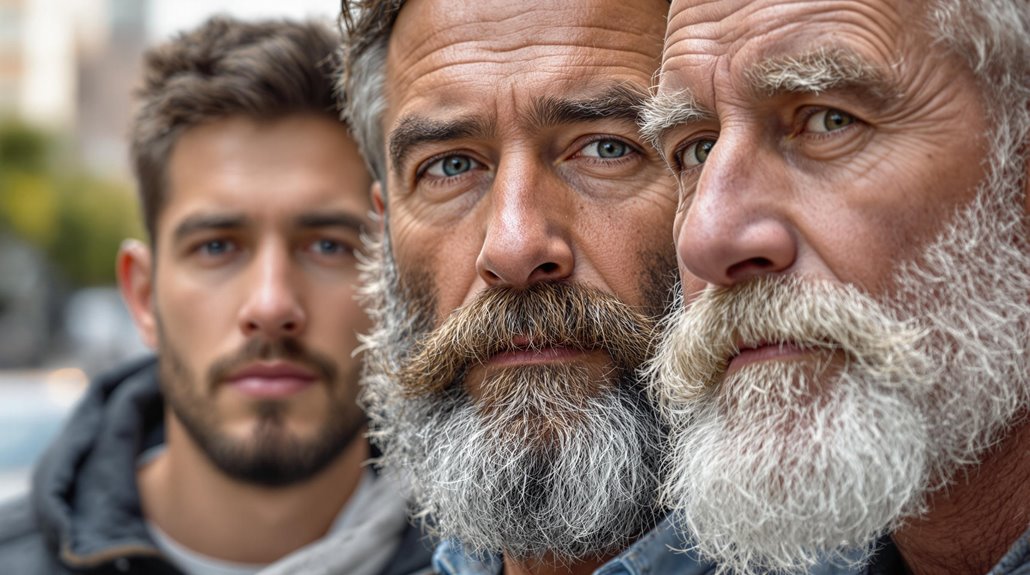
You're not just at the mercy of genetics regarding beard growth; your lifestyle plays a vital role too. A balanced diet rich in vitamins A, C, and E, along with minerals like zinc and iron, greatly supports healthy hair growth. These nutrients make your beard stronger and more vivid. Incorporating protein-rich foods, such as eggs, nuts, and lean meats, provides the fundamental building blocks for hair development, promoting healthier beard growth.
Exercise is another key factor. By improving blood circulation, regular exercise guarantees that nutrients reach your hair follicles more effectively, which can positively influence the rate of beard growth. Likewise important is stress management. High-stress levels can negatively affect testosterone production, potentially hindering your beard's growth. Practicing stress management techniques guarantees your hormones are at peak levels for beard development.
Hydration is often overlooked, but it's vital for maintaining healthy skin and beard growth. Drinking adequate water supports your comprehensive health and contributes to better hair growth, including facial hair. By adopting a lifestyle that includes a balanced diet, regular exercise, proper hydration, and stress management, you can greatly improve your beard growth, making it fuller and healthier.
Common Beard Growth Misconceptions
Many myths surround beard growth, leading to misconceptions about how facial hair develops. Some believe that shaving more often results in thicker hair, but this isn't true. Your beard's thickness and growth rate are primarily influenced by genetic factors and hormonal changes, not shaving frequency. Here are some common misconceptions:
- All men can grow a full beard by their late teens: This isn't the case for everyone. Genetic factors determine when you'll achieve full beard growth, often in your late 20s or early 30s.
- Ethnic background has no impact: In reality, your ethnic background plays a significant role in beard growth patterns. For instance, Mediterranean men generally have fuller beards compared to those from East Asian backgrounds.
- Beards automatically become fuller with maturity: While some men's beards do develop with time, hormonal changes and genetics can lead to slower growth or thinning as you get older.
- Supplements guarantee faster growth: A diet rich in vitamins supports hair health but doesn't promise quicker or denser beard growth. Proper beard care and nutrition are essential, but they don't replace genetic predispositions.
Understanding these misconceptions helps manage your expectations and accept your unique beard experience.
Tips for Optimal Beard Care

Achieving a healthy and well-groomed beard requires consistent care and attention to detail. Start by incorporating a specialized beard shampoo into your grooming routine. This helps cleanse and moisturize your skin and beard, removing dirt and excess oil that can lead to irritation. It's one of the critical factors that influence the general health and growth of your beard.
Next, care for your beard by applying high-quality beard oil or balm. These products not only moisturize and condition your beard, making it softer, but they also help to prevent brittleness, especially in challenging weather conditions. Regular use of these products guarantees your beard remains healthy and attractive.
Trimming your beard regularly is crucial for maintaining its shape and removing split ends, which can hinder growth and affect your beard's appearance. Daily brushing or combing further improves your beard's health by detangling hair and evenly distributing natural oils.
Lastly, don't neglect the skin beneath your beard. Exfoliate and moisturize regularly to maintain healthy skin, which supports ideal hair growth and minimizes irritation. By following these tips, you'll guarantee your beard looks its best at any stage of life.
